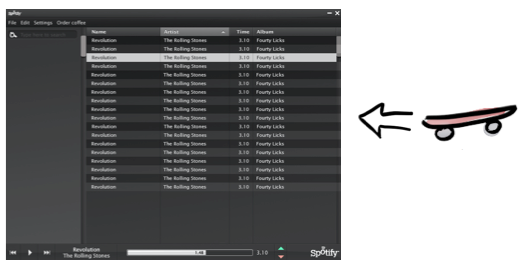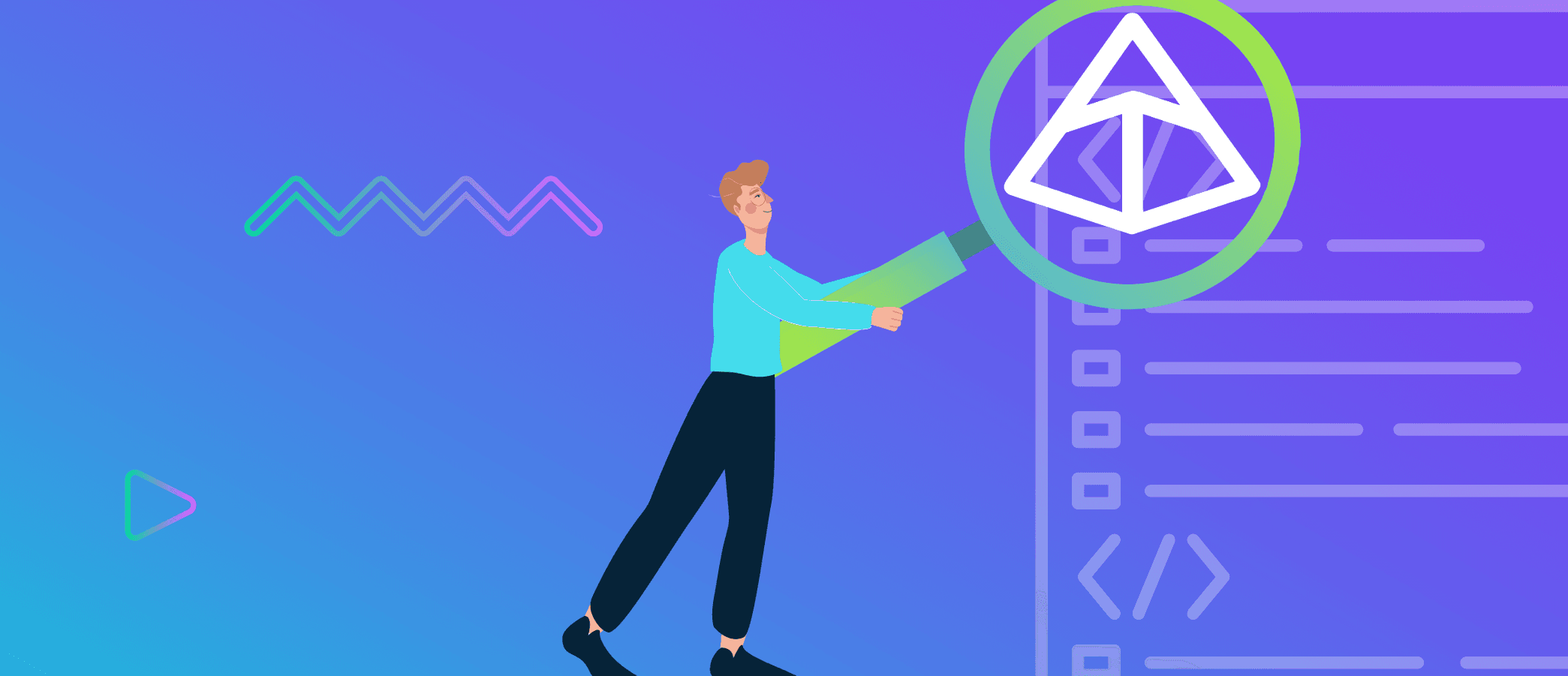Prototypes and final products hold distinct roles in the development process. In this article, we will delve into their differences, similarities, the dynamics between them, and the importance of incorporating a prototyping phase in your product’s development.
Please keep in mind this article focuses on a product-centered approach. Prototype has a different meaning for backend development.
Let’s start by understanding the concepts:
What is a prototype?
A prototype is a preliminary version or early model of a product. In software development, a prototype is a digital simulation of an application or system, created to test the functionality, user experience, and to validate the design and interface.
Digital prototypes are great for finding the right user flow and for verifying that the design of the software doesn’t have any flaws before building the finished product, saving time and costs during the development.
Prototypes can be used to demonstrate in a tangible way, the key features of the product, allowing users to interact with the application and stakeholders to leverage it for raising funds in the beginning stages of a startup.
After creating a prototype, developers and designers can collaborate with users and stakeholders to refine requirements, evaluate usability, and make necessary modifications to enhance the software's performance, user experience, interface, and functionality.
It’s important to note that a prototype is not the same as a proof of concept, since the latter focuses on proving market and technology viability and feasibility, while a prototype is more user-centric. A prototype also differs from an MVP; while you can interact with functionalities in a prototype, it is still a non-functional product; a minimum viable product is a working product with basic essential features and a stepping stone into further development after the market release.
What is a final product?
The final product is the market-ready solution, the completed model, and the fully developed version of the application, system, or physical product. It is ready to be launched, released, or distributed to end users and customers.
In the software development life cycle, the final product is the end result of the process, after planning, prototype testing, coding, refining and is ready for deployment. The final version of the product includes all of the desired features and functionalities outlined in the initial stages of development.
Although the finished product has been deployed, it’s worth noting that there can still be further development and work done on it. Updates and new version releases ensure that the software keeps up with market changes, addresses new user demands and mitigates bugs and anomalies - as should happen with every digital product.
Prototype vs. final product

| Characteristic | Prototype | Final Product |
|---|---|---|
| Goal or purpose | Testing design, gather, feedback, validation | Delivering functionality |
| Development process phase | Early stages, blueprint | Ready-for-market product |
| Stage of completion | Preliminary model to be refined | Final stage of development |
| User interaction | Testing interface and design | Total use of complete features |
| Revenue | Does not generate profit | Intended to generate revenue |
| Reliability | Not refined for stability | Stable and reliable performance |
| Iterative development | Feedback-driven iterations | Continuous improvement |
| User-Centric Focus | Validate user experience | Provide a satisfying user experience |
| Testing and Validation | Feedback and design validation | Comprehensive testing and QA |
| Learning and Improvement | Early exploration and feedback | Updates based on user feedback |
Differences
In summary, prototypes are early versions used for testing and refining the design and functionality, while finished products represent the completed and refined version of the software that is ready for distribution and use. Prototypes are focused on exploration and feedback, while final products aim to deliver the intended functionality and provide a high-quality user experience.
The key difference between a prototype and the final product can be determined by the following aspects:
- Goal or purpose
- Development process phase
- Stage of completion
- User interaction
- Reliability
- Revenue
Goal
The main purpose of software prototypes is to test functionality, gather feedback, validate the design of the product idea, and identify potential issues early in the product development process. The final product is released to the market ready to be used, consumed or purchased by customers, and its intention is to bring revenue to the company.
Phase of development
A prototype is built in the early stages, before developing the actual product. It acts like a blueprint - with tested and accepted features - to follow for development. The final product is instead the ready-for-market product, it’s the conclusive result of the whole development process that is released to the public.
Progress of completion
A prototype is a preliminary stage, barely the design of a product; at this point, it just consists of a model to be refined and modified according to tests and analysis. The final product is, as its name implies, the final stage of product development, the end result.
User Interaction
Whilst users can play around with a prototype and get a feel of how the end result of the product will appear and how they will be able to engage with it, its functionality is not complete; it is not ready for its projected use, only for testing and feedback gathering. The final product on the other hand, is entirely usable with all the features complete and is intended for end users.
Revenue
While a prototype can save money in the development process, it doesn’t generate profit; it’s the final product that fills the role of generating revenue for the company.
Reliability
Prototypes are not typically fine-tuned or refined for performance. They may not be stable or reliable and will contain bugs, are of limited use, and have restricted error handling and incomplete functionality. Final products -when developed according to best practices- have undergone testing and quality assurance processes to guarantee end users a reliable and stable performance.
| Differences | Prototype | Final Product |
|---|---|---|
| Goal or purpose | Testing design, gather feedback, validation | Delivering functionality |
| Development process phase | Early stages, blueprint | Ready-for-market product |
| Stage of completion | Preliminary, model to be refined | Final stage of development |
| User interaction | Testing interface and design | Total use of complete features |
| Revenue | Does not generate profit | Intended to generate revenue |
| Reliability | Not refined for stability | Stable and reliable performance |
Similarities
The prototype and final product are both part of the same development process and therefore share similarities. While prototypes and final products have distinct purposes and stages in the development process, they both contribute to the overall goal of delivering a high-quality software solution that meets user needs and expectations.
The similarities they share can be grouped based on the following aspects:
- Iterative development
- User-centric focus
- Testing and validation
- Learning and improvement
Iterative Development
Both prototypes and final products can go through iterative development processes or continuous improvement, although it happens at different stages. In both cases, feedback and insights gathered from stakeholders and users are crucial for making revisions, modifications and refinements to enhance the overall quality and meet user needs. However, prototypes undergo these changes before production processes and final products are updated after release.
User-Centric Focus
Even though their final goals are different, prototypes and final products are user-focused. While prototypes aim to validate and improve the user experience of the software and final products intend to provide a solution and satisfy a need, with a pleasant user experience, they both consider usability and functionality to fulfill user needs and expectations.
Testing and Validation
Both the physical prototype and final product undergo rigorous testing and validation processes. Prototypes are tested to gather feedback and validate design choices before the manufacturing process; while final products undergo comprehensive testing to ensure functionality, stability, and reliability. Both go through quality assurance measures to identify and address any issues or bugs.
Learning and Improvement
Prototypes and final products are both pathways for learning and improvement. Prototypes allow for early exploration of ideas, identification of potential issues, and refinement based on feedback. Final products, while more polished, may still undergo updates and new releases based on user feedback and market demands to continually improve the software.
| Similarities | Prototype | Final Product |
|---|---|---|
| Iterative development | Before development | After release (updates) |
| User-centric focus | Validate user experience of the software | Deliver to users a solution with software |
| Testing and validation | Gather feedback on design choices | Comprehensive testing and QA to ensure reliability |
| Learning and improvement | Exploration of ideas and design refinement in early stages | Updates after release to fix bugs based on user feedback and meet market demands |
Examples of (successful) final products that underwent prototyping
Spotify
Spotify, a popular music streaming platform, is a successful digital product that decided to first create prototypes. Before its official launch in 2008, Spotify developed and tested several prototypes to fine-tune its user interface, features, and overall user experience. Those prototypes allowed the company to gather feedback, iterate on design choices, and refine the platform's functionality, which played a crucial role in shaping Spotify into the user-friendly and feature-rich music streaming service it is today.

Airbnb
Airbnb, the online platform to search for short-term accommodation, is a digital product that has achieved significant success and underwent prototyping during its development. In the first stages of Airbnb, the founders created prototypes to test and refine their platform's key features and user experience. They experimented with different design elements, search functionalities, and booking processes to ensure a seamless and intuitive user interface.

Tesla
While not a digital but a physical product, the Tesla Model S, an electric luxury sedan, is a good example of a successful finished product that started with a working prototype in the early stages of development. Tesla extensively prototyped the Model S, refining its design, performance, and user experience. Prototypes were used to test and optimize battery efficiency, vehicle range, charging capabilities, and interior features. The iterative prototyping process helped Tesla gather valuable insights, address engineering challenges, and deliver a high-quality electric vehicle that has been widely praised for its performance and innovation.
Why should products undergo a prototyping phase?
By leveraging prototyping, successful companies, such as the examples above, have been able to explore different concepts, validate ideas, and make data-driven decisions to deliver a product that resonated with users. The iterative nature of prototyping enables companies to continuously improve their service, introduce new features, and stay competitive in dynamic industries.
Conclusion
Prototypes serve as early models for testing and refining designs, while final products are the completed and market-ready versions of software or physical products. Prototypes focus on testing, exploration and feedback, whereas final products aim to deliver functionality and a satisfying product ready for use. By incorporating a prototyping phase, companies can gather valuable insights, make data-driven decisions, and continuously improve their products. However, after release, the final product can still undergo regular updates and continuous development to help the product remain competitive, relevant, and aligned with evolving user expectations.








